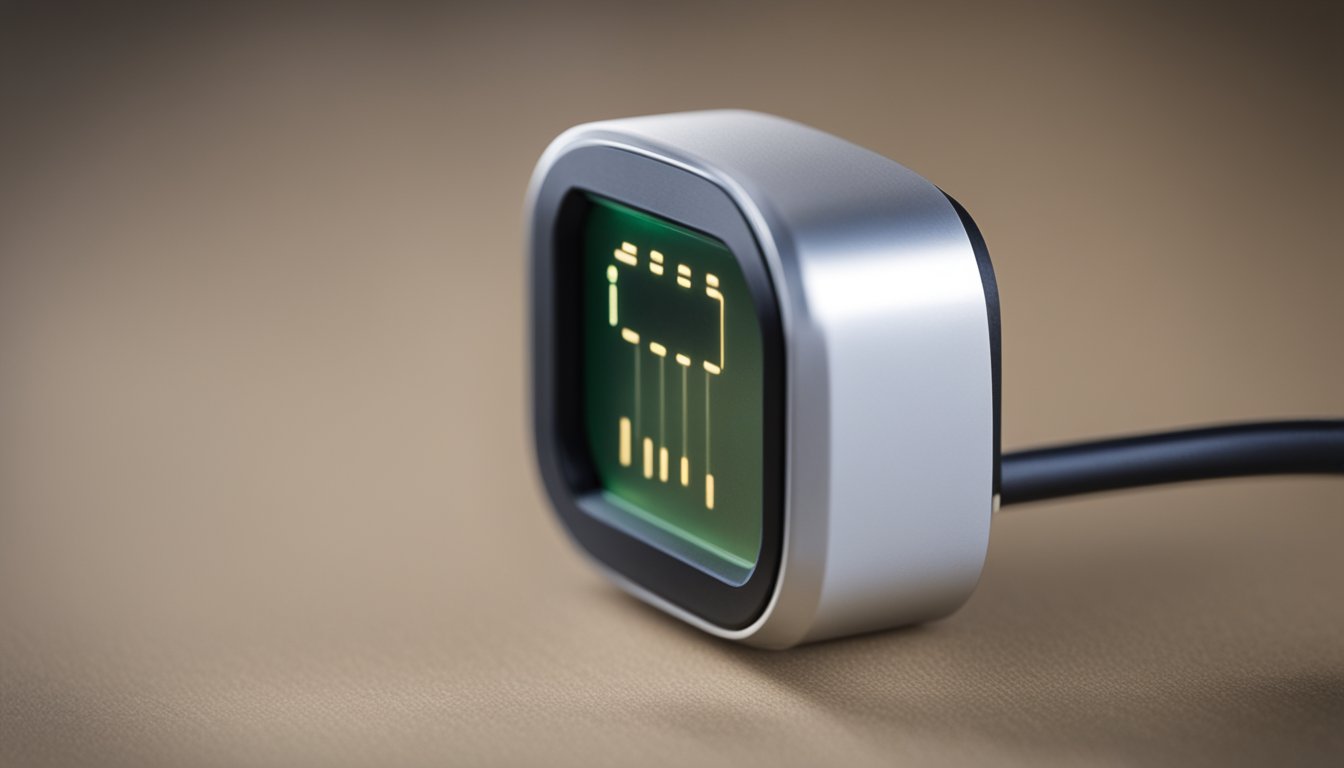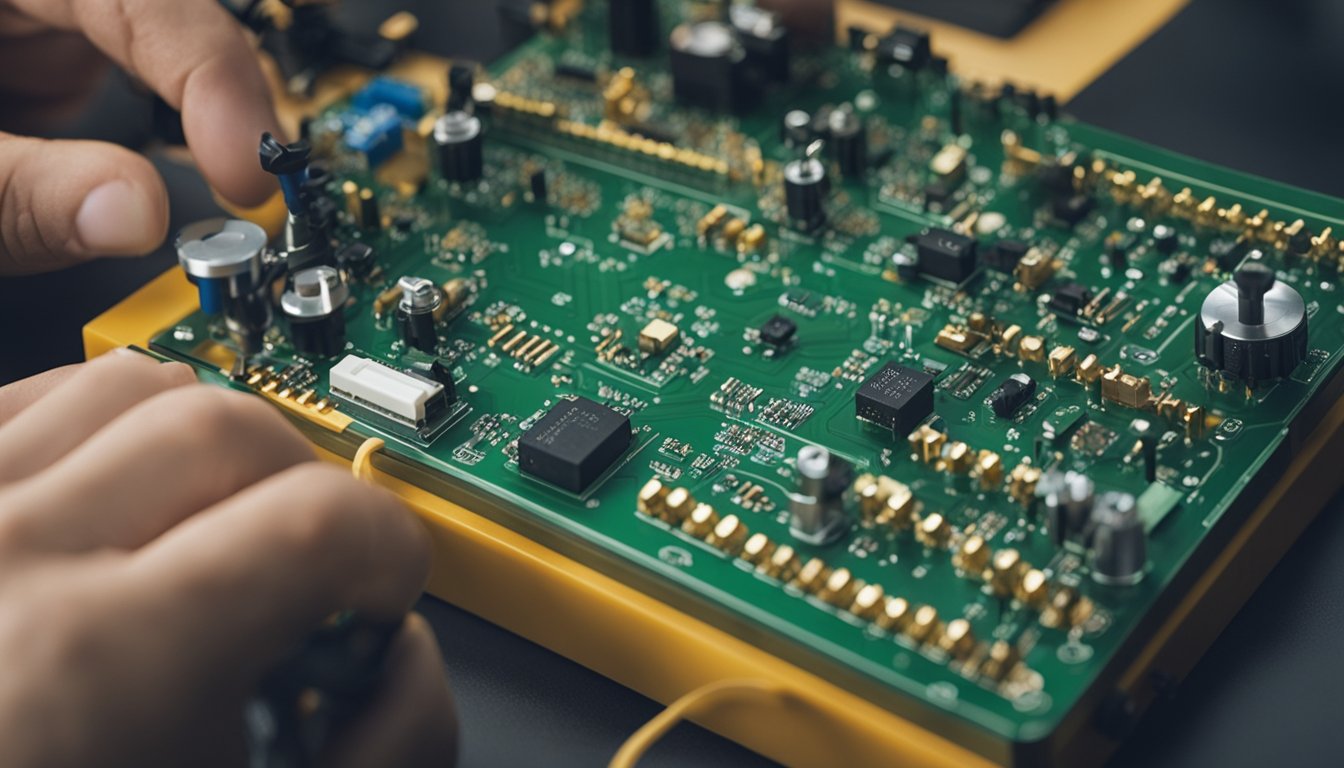Contact
Write to Us And We Would Be Happy to Advise You.
Do you have any questions, or would you like to speak directly with a representative?
By peter
If you’re looking for a reliable and durable switch for your electronic devices, you might want to consider using a capacitive sensor switch. This type of switch is commonly used in touchscreens, buttons, and other electronic devices. Unlike traditional mechanical switches, capacitive sensor switches are made up of two conductive layers that are separated by an insulating layer. When you touch the switch, your finger acts as a conductor, triggering the switch to activate.

Capacitive sensor switches are becoming increasingly popular due to their many advantages. For one, they are more durable than mechanical switches since they have no moving parts that can wear out over time. They are also more resistant to environmental factors such as dust, moisture, and temperature changes. Additionally, capacitive sensor switches are more sensitive and responsive to touch, providing a more seamless and intuitive user experience.

Capacitive sensing is a technology that measures changes in capacitance to detect the presence or absence of an object. Capacitance is the ability of a system to store an electric charge. In a capacitive sensor switch, a change in capacitance is detected when an object comes into close proximity to the sensor.
Capacitive sensors work by creating an electric field between two conductive plates. When an object comes close to the plates, it changes the capacitance of the system, which is detected by the sensor. The amount of change in capacitance is directly proportional to the distance between the object and the plates.
Capacitive sensors can detect a wide range of materials including metal, plastic, and glass. They are also highly sensitive and can detect very small changes in capacitance, making them ideal for use in touch-sensitive devices.
There are two main types of capacitive sensors: self-capacitance and mutual capacitance.
Self-capacitance sensors use a single electrode to detect changes in capacitance. They are commonly used in touchscreens and touchpads.
Mutual capacitance sensors use two electrodes to detect changes in capacitance. They are commonly used in proximity sensors and object detection systems.
Capacitive sensors can also be designed to be either active or passive. Active sensors require an external power source to operate, while passive sensors do not. Passive sensors are typically less expensive and simpler to design, but they may not be as sensitive as active sensors.
Overall, capacitive sensing is a reliable and accurate technology that is widely used in various applications, including consumer electronics, automotive, and industrial automation.

When designing a capacitive sensor switch, the choice of materials is crucial for ensuring optimal performance. The materials used must have a high dielectric constant to maximize capacitance and sensitivity. Common materials used for the sensor electrode include copper, aluminum, and conductive ink.
For the dielectric layer, materials such as glass, ceramic, and plastic are commonly used. The thickness of the dielectric layer also plays a critical role in the sensitivity of the sensor. A thinner dielectric layer will result in a higher capacitance and greater sensitivity.
The geometry of the sensor also plays a crucial role in the performance of the capacitive sensor switch. The shape and size of the sensor electrode and the dielectric layer can affect the sensitivity and response time of the switch.
The shape of the electrode can be optimized to maximize the sensing area while minimizing parasitic capacitance. A common design is a circular electrode with a concentric ring to reduce parasitic capacitance.
The size of the dielectric layer can also be optimized to maximize the capacitance and sensitivity of the sensor. A thinner dielectric layer will result in a higher capacitance and greater sensitivity, but may also increase the risk of electrical breakdown.
Overall, the design and construction of a capacitive sensor switch is critical for ensuring reliable and accurate performance. By carefully selecting materials and optimizing sensor geometry, a high-performance capacitive sensor switch can be designed for a variety of applications.
Capacitive sensor switches have a wide range of applications in various industries. In this section, we will discuss some of the most common applications of capacitive sensor switches.
Capacitive sensor switches are commonly used in consumer electronics such as smartphones, tablets, and laptops. These switches are used to replace traditional mechanical buttons and switches, providing a sleek and modern design. Capacitive sensor switches are also more durable and reliable than mechanical switches, which can wear out over time.
In addition, capacitive sensor switches can be customized to provide haptic feedback, which simulates the feeling of pressing a physical button. This provides users with a more satisfying user experience and can improve the overall usability of the device.
Capacitive sensor switches are also widely used in industrial automation applications. These switches are used to detect the presence or absence of objects, as well as to measure the distance between objects. Capacitive sensor switches are particularly useful in applications where traditional sensors, such as optical or mechanical sensors, are not suitable.
Capacitive sensor switches can be used to detect the level of liquids in tanks, measure the thickness of materials, and detect the presence of objects in harsh environments. These switches are also resistant to interference from electromagnetic fields, making them ideal for use in industrial environments.
Overall, capacitive sensor switches are versatile and reliable components that can be used in a wide range of applications. Whether you are designing consumer electronics or industrial automation systems, capacitive sensor switches can provide a durable and reliable solution.
Capacitive sensor switches require proper signal conditioning for accurate detection of touch. The signal conditioning circuitry is responsible for amplifying and filtering the signal from the sensor to remove any noise or interference. A simple RC filter can be used to remove high-frequency noise, while a differential amplifier can be used to amplify the signal.
Capacitive sensor switches can be easily interfaced with a microcontroller for further processing of the touch signal. The microcontroller can be used to detect the touch and perform an action based on the touch input. The interface between the sensor and microcontroller can be achieved using a simple voltage divider circuit or a dedicated interface IC.
When interfacing with a microcontroller, it is important to consider the capacitance of the sensor and the input impedance of the microcontroller. The capacitance of the sensor can affect the voltage divider circuit, while the input impedance of the microcontroller can affect the accuracy of the touch detection.
Overall, proper circuit integration and interfacing are crucial for the accurate and reliable operation of capacitive sensor switches. With the right signal conditioning circuitry and microcontroller interface, capacitive sensor switches can be used in a wide range of applications, including consumer electronics, automotive, and industrial control systems.
Capacitive sensor switches are highly sensitive to environmental factors such as temperature, humidity, and pressure. These factors can cause false triggering of the switch, resulting in inaccurate readings and unreliable performance. To overcome this challenge, it is important to choose a switch that is designed to operate in the specific environmental conditions of your application.
One solution to this challenge is to use a switch with a built-in temperature compensation feature. This feature adjusts the sensitivity of the switch based on changes in temperature, ensuring accurate readings even in extreme temperatures. Additionally, choosing a switch with a high IP rating can protect it from dust and moisture, ensuring reliable performance in harsh environments.
Capacitive sensor switches can be susceptible to noise, which can cause false triggering and affect the accuracy of the readings. Noise can be caused by a variety of factors, including electromagnetic interference (EMI) and radio frequency interference (RFI).
To overcome this challenge, it is important to choose a switch that is designed to minimize noise. One solution is to use a switch with shielded cables and connectors, which can help to prevent EMI and RFI from affecting the switch. Additionally, using a switch with a high signal-to-noise ratio (SNR) can help to minimize the impact of noise on the readings.
Overall, by choosing a switch that is designed to operate in your specific environmental conditions and that has features to minimize noise, you can ensure reliable and accurate performance of your capacitive sensor switch.
Do you have any questions, or would you like to speak directly with a representative?